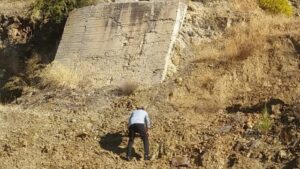Archaeologists are testing ancient stone tool designs using very modern engineering. In the journal Royal Society Interface, a group of three archaeologists based in England and Spain surveyed tools found at the two-million-year-old Olduvai Gorge site and ran them through engineering tests to try and understand if ancient hominins were iterating better and better materials and designs.
The archaeologists noticed that tools in different families were made with different materials, the same way a mallet is made of a different material than a saw or a socket wrench. Especially in a time before there was any kind of forging, ancient hominins could only use what they could find in pretty pure form in their local environments.
“For more than 1.8 million years hominins at Olduvai Gorge were faced with a choice: whether to use lavas, quartzite, or chert to produce stone tools,” the researchers explain. Lavas include igneous rocks like basalt and granite. Chert is a subgroup of sedimentary rock and includes flint, opal, and jasper.
Read more: yahoo
Ask me anything
Explore related questions





